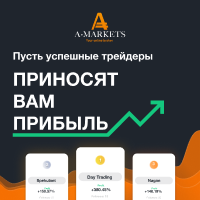Major Market Forces
Learning how these major factors shape trends over the long term can provide insight into how future trends may occur. Here are the four major factors:
Factors That Shape Market Trends
Investopedia / Ellen Lindner
Government
Government holds much sway over the free markets. The fiscal and monetary policies that governments and their central banks put in place have a profound effect on the financial marketplace. By increasing and decreasing interest rates, the U.S. Federal Reserve can effectively slow or attempt to speed up growth within the country. This is called monetary policy.
If government spending increases or contracts, this is known as fiscal policy and can be used to help ease unemployment and/or stabilize prices.
By raising or lowering taxes, altering interest rates, and influencing the amount of dollars available on the open market, governments can change how much investment flows into and out of the country.12
International Transactions
The flow of funds between countries affects the strength of a country's economy and its currency. The more money that is leaving a country, the weaker the country's economy and currency.3 Countries that predominantly export, whether physical goods or services are continually bringing money into their countries. This money can then be reinvested and can stimulate the financial markets within those countries.
Speculation and Expectation
Speculation and expectation are integral parts of the financial system. Consumers, investors, and politicians all hold different views about where they think the economy will go in the future, and that affects how they act today. The expectation of future action is dependent on current acts and shapes both current and future trends. Sentiment indicators are commonly used to gauge how certain groups are feeling about the current economy. Analysis of these indicators as well as other forms of fundamental and technical analysis can create a bias or expectation of future price rates and trend direction.
Supply and Demand
best Stock Strategy
Supply and demand for products, services, currencies, and other investments creates a push-pull dynamic in prices. Prices and rates change as supply or demand changes. If something is in demand and supply begins to shrink, prices will rise. If supply increases beyond current demand, prices will fall. If supply is relatively stable, prices can fluctuate higher and lower as demand increases or decreases.
A Mix of Factors
These factors can cause both short- and long-term fluctuations in the market, but it is also important to understand how all these elements come together to create trends. While all of these major factors are categorically different, they are closely linked to one another. Government mandates can affect international transactions, which play a role in speculation, and changes in supply and demand can play a role in each of these other factors.
Government news releases, such as proposed changes in spending or tax policy, as well as Federal Reserve decisions to change or maintain interest rates can also have a dramatic effect on long-term trends. The lowering of interest rates and taxes can encourage spending and economic growth. This in turn has a tendency to push market prices higher. However, the market does not always respond in this way because other factors may also be at play. Higher interest rates and taxes, for example, can deter spending and result in a contraction or a long-term fall in market prices.
In the short term, these news releases can cause large price swings as traders and investors buy and sell in response to the information. Increased action around these announcements can create short-term trends, while longer-term trends may develop as investors fully grasp and absorb what the impact of the information means for the markets.
Stock Strategy
The International Effect
International transactions, the balance of payments between countries, and economic strength are harder to gauge on a daily basis, but they also play a major role in longer-term trends in many markets.4 The currency markets are a gauge of how well one country's currency, and by extension, its economy, are doing relative to others. High demand for a currency means that currency will rise relative to other currencies.
The value of a country's currency can also play a role in how other markets will do within that country. If a country's currency is weak, this will deter investment into that country, as potential profits will be eroded by the weak currency.
The Participant Effect
The analysis and resultant positions taken by traders and investors based on the information they receive about government policy and international transact
Read more on :
Https://stockstrategy.net
Major Market Forces
Сообщений: 3 |
|
| В начало страницы |
Быстрый ответ
Чтобы писать на форуме, зарегистрируйтесь или авторизуйтесь.
















